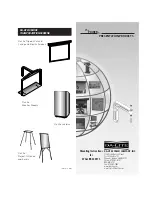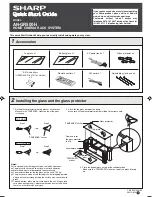
6. REMOTE OPERATION
Page 137
© 2009 DH Instruments, a Fluke Company
6.4
Programming Formats
PPC4 supports two program message formats, “Classic” and “Enhanced”. The user must select which
format to use. Selection can be accomplished from the front panel (see Section 5.7.9.2 for Advanced
Interface and Section 4.5.2.3 for Basic Interface) or remotely using the
“MSGFMT”
program message
(see Section 6.5.4).
The main difference between the two formats is that when using the IEEE-488 interface, a
“?”
must be included
in an enhanced command for there to be a response from the PPC4. In all other cases (classic or enhanced),
every command has a response. In addition, the enhanced message format supports IEEE Std. 488.2 syntax,
format and status reporting.
The default is the classic format to allow downward compatibility with existing host software.
In either format, it is recommended that you start out a command sequence with the
“*CLS”
command,
which clears all of the communication and error queues. The basic commands are similar for both the
classic and enhanced formats, but the usage, syntax, format and status reporting are different.
Note
The PPC4 program message set is downward compatible with the previous PPC3
program message set. In some cases additional arguments are available at the end
of PPC4 commands that are not available in PPC3 commands. However the
command function is not altered.
6.4.1
Classic Program Message Format
Each program message sent is also a query. Only one program message can be sent to the
PPC4 at time. After sending any program message, the PPC4 must reply before another
program message can be sent. The reply will contain data, or a numeric error message if the
program message was invalid. The reply must be received before issuing another program
message to the PPC4. This insures that the PPC4 has completed the program message.
Most remote program messages will return a reply within 500 ms except:
“PR”
,
“PRR”
,
“SR”
,
“ATM”
,
“RATE”
: Up to 2.0 seconds to allow a new measurement.
“RPT”
,
“ARANGE”
: Up to 10 seconds
The syntax and format used for each program message in the classic mode is listed next to
the keyword ‘Classic:’ in each program message summary in Section 6.5.4.
6.4.2
Enhanced Program Message Format
The enhanced program message format uses the IEEE Std. 488.2 format, syntax and status
reporting. Errors are reported using the IEEE Std. 488.2 status reporting model. If an error is
reported, the error is put into an Error Queue and the
“ERR?”
query program message can
be used to get a text description of the most recent error. If you are using the IEEE-488 port,
the service request line can be setup to be asserted if this occurs (see Section 6.6.2). In the
enhanced format, there are two possible program message types for every program
message. Each of these two types starts with the same basic text referred to as the program
message header. The two types are COMMAND type and QUERY type commands.
Summary of Contents for PPC4
Page 70: ...PPC4 OPERATION AND MAINTENANCE MANUAL 2009 DH Instruments a Fluke Company Page 58 Notes...
Page 194: ...PPC4 OPERATION AND MAINTENANCE MANUAL 2009 DH Instruments a Fluke Company Page 182 Notes...
Page 226: ...PPC4 OPERATION AND MAINTENANCE MANUAL 2009 DH Instruments a Fluke Company Page 214 Notes...
















































